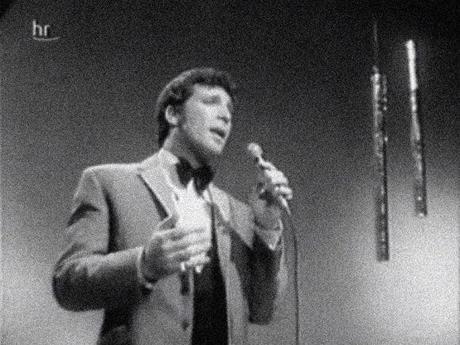Paul McCartney could sing. So could his fellow Beatle, John Lennon (although – to my surprise – with rather less range, despite the almost feminine emotion). Tom Jones is a baritone-to-tenor belter, while Madonna sounds as ordinary as an Asda shopgirl. (That is, the sort who go on Britain’s Got Talent and fail to knock the socks off Simon Cowell with their unexceptional vocals.)

In itself, I don’t expect that any of this will be news to hearing people, unless they’re tone-deaf, of course. But this is the first time I have been able to distinguish singing voices like this since my cochlear implant was switched on.
The turnaround is quite astonishing. So far I have had three tuning sessions and, despite layers of audio being added each time, they were all rather disappointingly prosaic. In particular the last session, which instead of giving me more textured sounds, simply added more monotonous frequencies. The late Lord Ashley of Stoke was right: like him, I often seemed to be listening to a ‘croaky Dalek with laryngitis’.
So I didn’t set out to listen to vocals when I plugged my CI processor into iTunes on my laptop for the first time last week. Instead, I went back to basics on the music, and put the voices to the back of my mind. No complicated arrangements to begin with; just one or two instruments at a time – guitar, drums, maybe piano – and certainly no ska orchestrations for me, thankyou very much (sorry, Madness).
The White Stripes‘ The Hardest Button to Button was perfect. Not only was it constructed of not much more than electric guitar riffs accompanied by drumming as thrilling as a pacey countdown, the beat was also made visual, thanks to Michel Gondry’s inventive video direction.
Next, I tried John Lennon’s Imagine for its piano recital – and once I’d got past the intro and Yoko Ono had started opening the shutters in the white house to her spouse’s playing, realised that my brain had started filtering out excess noise. Encouraged, I moved onto Coldplay’s Yellow – and saw the words come out of Chris Martin’s mouth, clear as the brightening skies behind him.
I am surprised that I am picking out individual vocals already. It has been five weeks since switch-on, two since my last tuning session.
But that doesn’t mean I’m suddenly listening to all sorts. Far from it; I am still learning to listen to what I already know, just to see how it sounds with a CI. The selections I have made might be rather eclectic, but then again, even with hearing aids I didn’t have the luxury of being able to choose exactly what music to like.
I tended to pick over-exposed, trashy pop – Madonna, Michael Jackson, Justin Timberlake – simply because their catchy beat was easy to pick up on, their dance moves looked good, and they often accompanied their releases with a video. I was already familiar with The Beatles from school music lessons. And I wanted to like David Bowie for his ’70s arthouse connotations.
Of course, I wasn’t fooled into thinking that any of these people had great voices. I already knew that much of their mass appeal came from heavy self-promotion. But such is my brain’s ability to tune in with the CI that I can now see, for example, how run-of-the-mill Madonna’s vocals really are (although she does try very hard in Don’t Cry For Me Argentina). She might as well be doing the night shift on the tills.
In contrast, there’s something unattainable about Tom Jones’ vociferations – which explains his god-like status. Why, oh why, wasn’t he drafted in for Heroes? Lyrics like ‘I…I wish we could be kings/so we could beat them/Forever and ever‘ would sound a lot more grandiose if they weren’t delivered in a gossamer-thin voice that disappears altogether under the loud, perpetually echoing cymbals. David Bowie, I’m very disappointed in you.
Thanks to the CI, my musical tastes will probably change, but irrespective of the benefits I still don’t have the full access to sounds that hearing people have. I still have to lipread. I still need subtitles on music videos that don’t feature a well-lit face, and a crisp high-resolution picture. At this stage I am not even sure how wide a range of musical genres I can enjoy – although my inkling is that I’ll pick moderate guitar rock.
The only way I can understand what someone is saying is if I’m facing them. I’m not sure I could recognise their voices that quickly or easily if they spoke suddenly from behind me – I don’t think I could ever be that lassez-faire. I am only able to distinguish singers’ voices because I am watching them on video with a purpose. The only advantage I have now is that I don’t need to feel the vibrations on my laptop.
It is for that reason that I have also started speech therapy. Immediately following my last tuning session, I met a SALT for lipreading and listening practice. I’ve been given a sheet of paper with the numbers 1-100, days of the week and months of the year written on it, and have to practise with this regularly until my next appointment in two weeks’ time.
I feel that I am reliving my experience of going deaf, as if I am aged two all over again – and no Paul McCartney lyrics could hope to replicate it.
51.807220 -0.812766
